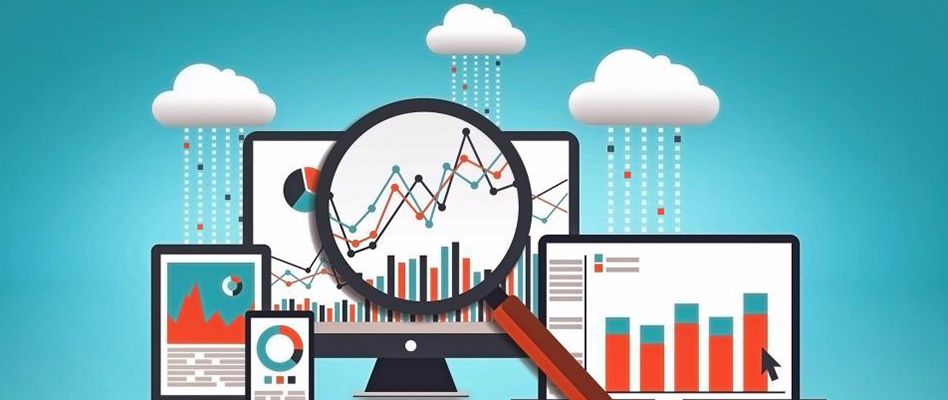
Data Driven Decisions: how to use analytics effectively
9 min read
In the digital age, we have more data than we know what to do with. Information is collected on users almost constantly, and now we have access to that information and the power to use it to make decisions. The collection and analysis of data is called Analytics and it helps decision makers weigh outcomes, risks and benefits. Essentially, analytics tools give companies a competitive advantage by allowing them to base decisions on cold, hard facts. This is the first in a series of posts exploring the many facets of data collection and analytics.
Know your data, what it can do and what it can't.
There are four types of data analysis:
Predictive: using data to determine what might happen in the future. Looking at patterns of users, such as how they found your website, can help identify future patterns.
Prescriptive: finding a solution to a problem by analyzing data. This isn't the frontrunner in the big data game but it can be very effective when available. Analytics in general are very good at shedding light on a subject but prescriptive analytics narrows it down to a point. This requires access to very specific data, like you might see in the healthcare industry, to make very specific decisions regarding a problem.
Diagnostic: a look at past data to see what happened and why. Looking back at past performance is a great way to understand where your ideas went right, and where they went wrong. For example, you can analyze a recent social media campaign to determine which parts of it were successful and which were not, based on mentions, likes and traffic.
Descriptive: what's happening right now based on the data. This is also called data mining, pulling up the big picture and summarizing the results.
Now that we've highlighted some of the things data can do, let's put it into perspective. Not all data is useful. Metrics represent the values that you're measuring. Determining which metrics are best suited to your needs can depend on which type of analysis you use and the information you're able to collect. (Additionally, some specific metrics may depend on which analytics tool you use, but that's a topic for another day.)
Some of the most common metrics are:
Visitors and Unique Visitors: Visitors is the number of people who visit your site, regardless of how many times they visit, in a given period of time. Unique visitors are those who only visit your site once. The ratio between visitors and unique visitors can measure your success in getting users to return to your site repeatedly.
Visits and Pageviews: Visits measure the number of times visitors have been to your website, while pageviews measure the number of times individual pages are viewed.
Bounce Rate: This is the percentage of single-page visits to your site, where the user leaves after only viewing one page. This can help identify the types of information visitors are looking for, and how to keep them on the site after the find it.
Exit Rate: Similar to bounce rate, this metric measures when a visitor leaves your site. You can determine how long they spent on the site, how many pages they viewed, and which page they exited from.
Conversion Rate: If your site has trackable goals, such as a subscription button on a blog or sales on an e-commerce site, this metric measures the percentage of visitors who complete the goal out of all site visitors.
Integrating analytics into your decision-making process
Before jumping into the data pool and pulling out information, you should know what you're looking for. Identifying the areas of your business that are the most pressing is the first step. If you could only improve one or two areas, which ones would you choose? Building your customer base? Increasing engagement? Retention? Sales? Pick one to start with.
Now that you have an objective, you need to identify the questions you need answered. Rather than looking at all the available data and trying to make sense of it, focus on finding a specific answer. Collecting all the data and analyzing it (data mining) is overwhelming and difficult to use effectively. Your question may be, "why are most of our users not returning to the site after the first time?" Looking at unique site visits vs. repeat visits and the habits of each group could tell you where you need to go next.
Once you've highlighted an area for improvement, determined the questions you need answered, collected the data and analyzed it, you can start implementing solutions. When you begin using data to inform your decisions, be flexible with the decisions you make and their outcomes. Analytics is a tool best used along with the other tools you have at your disposal—like usability testing, customer feedback and, essentially, your instincts when it comes to your business.
Upcoming posts on this topic include analytics tools, reporting metrics and key performance indicators, and measuring ROI.
Posted on: 30 August, 2017
Category:
Helpful Tips
Is Your Business AI Ready? Simple Steps You Can Take Today
Posted on: 25 June, 2025
The AI Revolution: Is It Really Right for Your Small Business?
Artificial intelligence has become th.....
Read more
90% of Australian SMEs Struggle to Build Effective Websites
Posted on: 21 November, 2025
New study reveals fundamentals—not AI features—remain the biggest barrier for small businesses
Limec.....
Read more
SUBSCRIBE TO OUR NEWSLETTER
Subscribe to receive updates on new features, themes, tips and tricks to make your website better.
We promise not to spam you! :)
View our privacy policy here.


